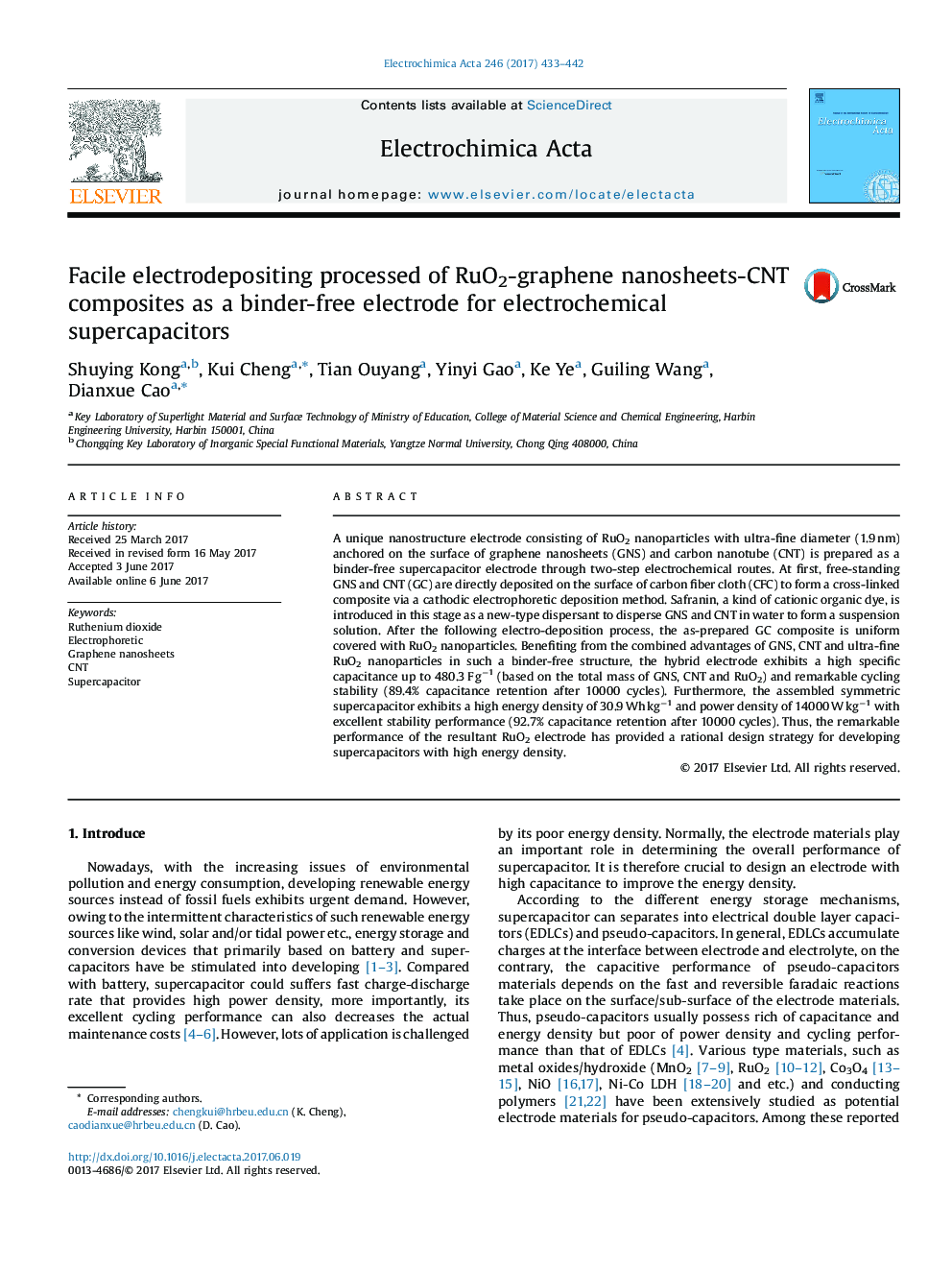| Article ID | Journal | Published Year | Pages | File Type |
|---|---|---|---|---|
| 6470498 | Electrochimica Acta | 2017 | 10 Pages |
A unique nanostructure electrode consisting of RuO2 nanoparticles with ultra-fine diameter (1.9 nm) anchored on the surface of graphene nanosheets (GNS) and carbon nanotube (CNT) is prepared as a binder-free supercapacitor electrode through two-step electrochemical routes. At first, free-standing GNS and CNT (GC) are directly deposited on the surface of carbon fiber cloth (CFC) to form a cross-linked composite via a cathodic electrophoretic deposition method. Safranin, a kind of cationic organic dye, is introduced in this stage as a new-type dispersant to disperse GNS and CNT in water to form a suspension solution. After the following electro-deposition process, the as-prepared GC composite is uniform covered with RuO2 nanoparticles. Benefiting from the combined advantages of GNS, CNT and ultra-fine RuO2 nanoparticles in such a binder-free structure, the hybrid electrode exhibits a high specific capacitance up to 480.3 F gâ1 (based on the total mass of GNS, CNT and RuO2) and remarkable cycling stability (89.4% capacitance retention after 10000 cycles). Furthermore, the assembled symmetric supercapacitor exhibits a high energy density of 30.9 Wh kgâ1 and power density of 14000 W kgâ1 with excellent stability performance (92.7% capacitance retention after 10000 cycles). Thus, the remarkable performance of the resultant RuO2 electrode has provided a rational design strategy for developing supercapacitors with high energy density.
Graphical abstractDownload high-res image (177KB)Download full-size image
